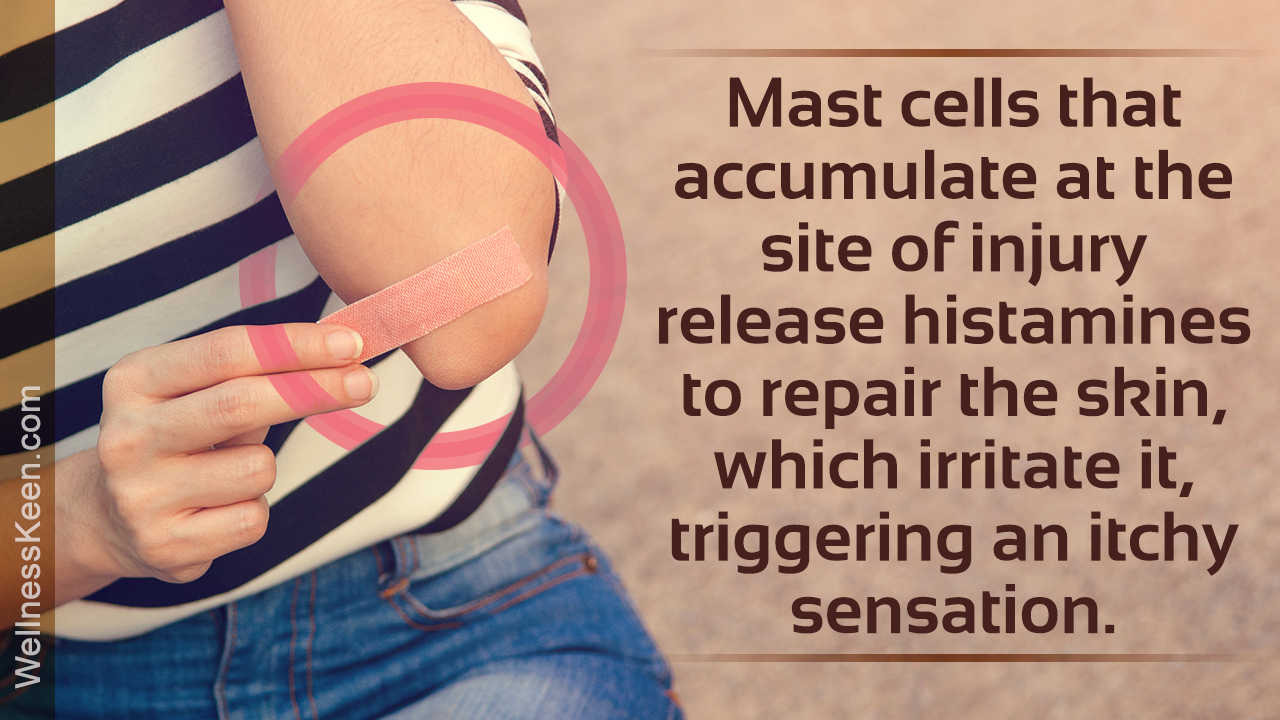
While some theorize that it happens due to extreme dryness in the skin that has newly formed, others believe that wounds itch during the healing process as the skin beneath the scab gets stretched. Find out some of the theories and speculations about the reasons behind healing sites of injury being itchy in this WellnessKeen article.
Healing Tip
Never peel off the scab that forms over a healing wound. Instead, allow the scab to fall off naturally to ensure that the wound heals completely.
When a wound starts to itch post a distinct formation of a scab at the site of injury, one can assume that it has begun to heal. Usually, the scab and the skin around it itches terribly. Since gently rubbing the affected site with your hands provides relief, one should not be tempted to scratch it hard as that can damage the scab, cause bleeding, and in turn prolong the healing process.
Speculations About Healing Wounds Turning Itchy
The exact reason behind this is still not conclusively known. However, experts have a few theories. They are discussed below:
Theory 1
Usually a scab-a tough, crusty layer-is seen covering the wound during the healing process. Due to the formation of scab, the skin below it gets stretched from all sides. This triggers the itchy feeling when the wound is healing.
Theory 2
During the healing process, the new skin that is formed is extremely dry. This is because the affected skin tissue does not have sebaceous glands that secrete sebum-oily matter that keeps the skin soft and well lubricated. Sebum plays a key role in keeping skin well hydrated and preventing dryness. As the newly formed skin is devoid of sebaceous glands, it is excessively dry, causing a persistent sensation of itchiness.
Theory 3
Histamine production in the new skin cells appears to be the most acceptable reason behind itching around healing wounds. A wound causes several types of cells to migrate to the injury site. Amongst the different cells present, mast cells play a very important role in healing the wound. These cells release inflammatory mediators, like histamines (chemicals), that dilate blood vessels close by. As a result, the cellular traffic of the vessels increases dramatically. As more and more cells reach the injury site, the repair of the damaged skin tissue speeds up. The scab that begins to cover the injured area releases histamines to facilitate healing. Histamines, though beneficial for wound healing, irritate the skin and cause itching.
Theory 4
A wound damages the nerves located within the skin. These are sensory nerves that carry information about the sensation of touch and pain from the skin to the brain. This is how we are able to experience pain and other sensations. As the wound begins to heal, a very thin layer of skin begins to form at the site of injury. The new nerve cells formed at the site are initially not able to relay information properly to the brain. These disturbances in sending information are incorrectly identified as an itchy sensation. Hence, we tend to scratch whenever a wound is healing.
Remember, no matter how itchy the wound becomes during the healing process, avoid scratching it with nails to prevent the skin condition from worsening. People who find it difficult to tolerate the itchiness associated with healing should use anti-itch ointments, such as calamine lotion. Application of ice packs may also help ease the itchy sensation. Usage of over-the-counter antihistamine creams, such as Benadryl, is also recommended for effective itch relief.
Disclaimer: The information provided in this article is solely for educating the reader. It is not intended to be a substitute for the advice of a medical expert.


